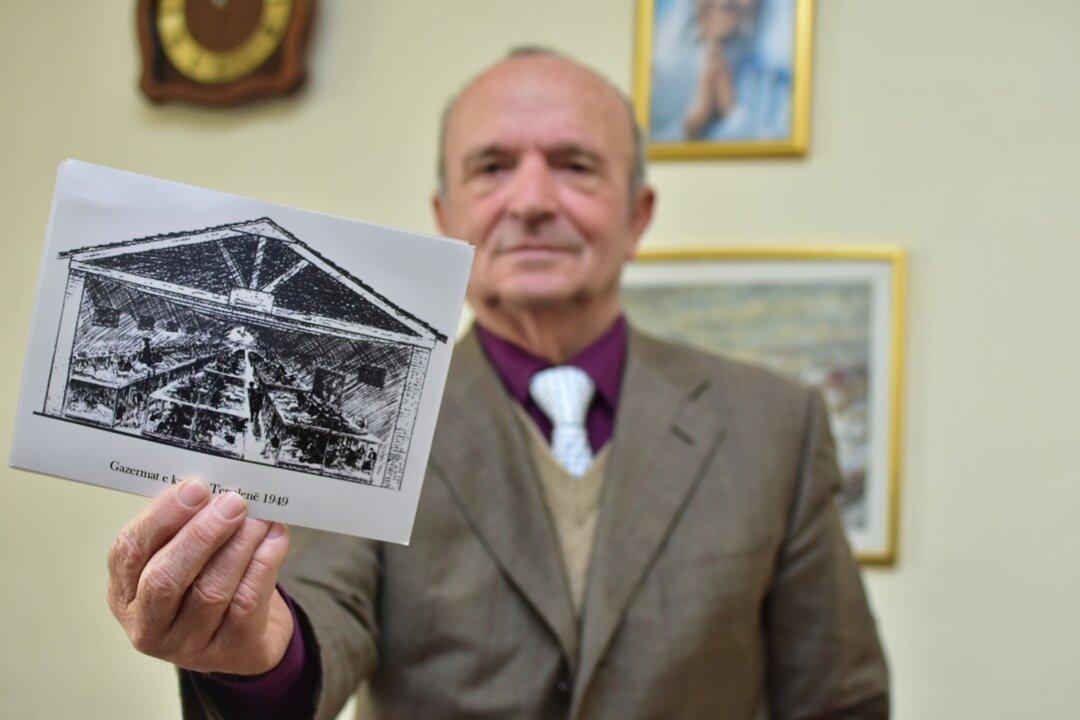TEPELENA, Albania—Simon Mirakaj was 4 years old in 1949 when, together with his mother and two siblings, he was transferred to an internment camp a few miles from the town of Tepelena in southern Albania.
His family’s odyssey of displacement first started in July 1945, when the communist government of Albania, headed by dictator Enver Hoxha, deemed them enemies. This was because Mirakaj’s father and uncles had been fighting communists in the countryside, sparking the regime’s anger.


